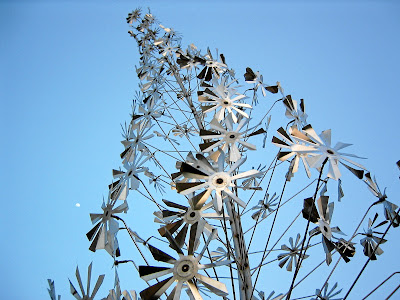As a non-artist, when I think of modern art, I think of art that has recently been created, and trying to think in a larger scope of history, I think of recent as in the last 100 years. In many ways, this is correct, but not completely. In the art world, different art styles are referred to as -isms. This probably sounds familiar from an old college humanities class. You probably learned about Naturalism, Romanticism, Realism, Impressionism, and more. Well, some of these -isms are major category heads, with many sub-isms beneath them, and that is true with Modernism.
Modernism was an all encompassing movement that takes in other movements as well. Modernism took place during the first part of the 20th century, and though sub-categories under Modernism may be quite different from each other, they do hold in common the rejection of Naturalism and Academicism, both styles which followed rigid rules of painting that could be taught in school, and that closely resembled the natural world. Instead Modernists favored experimental art.
The modern world was changing, so art needed to change as well. Modern art would explore the new modern world, and artists chose to do this in various ways. But regardless of the form of expression chosen, all forms are an exploration of each artist's own vision of life in their own way. Some of the sub-isms of Modernism, and what they explore, include: Expressionism which explores emotions and states of the mind, Constructivism which concentrates on social function, Surrealism tries to express the unconscious mind, and Cubism which explores the nature of representation.
These are just a few of the trends encompassed by Modernism, some are quite different, and others overlap with each other, but to all these artists, art became a way to discover truth, whether it be a modern truth of Futurism, or a universal truth of Suprematism. They all tried, I their own way, to seek answers to fundamental questions about the nature of art and human experience.
Modernism lasted about three quarters through the 20th century, and by the 1970's, modern artists were moving onto Post Modernism. Surprisingly, it was architects who took the lead in the development of Post Modernism, but much of the Post Modern visual art is a criticism of modern society.
Understanding a bit about Modernism and Post Modernism is helpful when discussing modern art. Plus, it is good to be familiar with the lingo of the art world, to use it correctly, especially to avoid confusion when talking with experts.
So back to the question of what is modern art? To the non-artist, all art created in the last 100 years is modern art, because modern refers to the present, or recent times. Modern art, in my mind, includes all of these -isms. Modern art does not directly resemble the subject, but is abstract. It is more difficult to understand but sometimes understanding is a mute point, the art is to be enjoyed.











